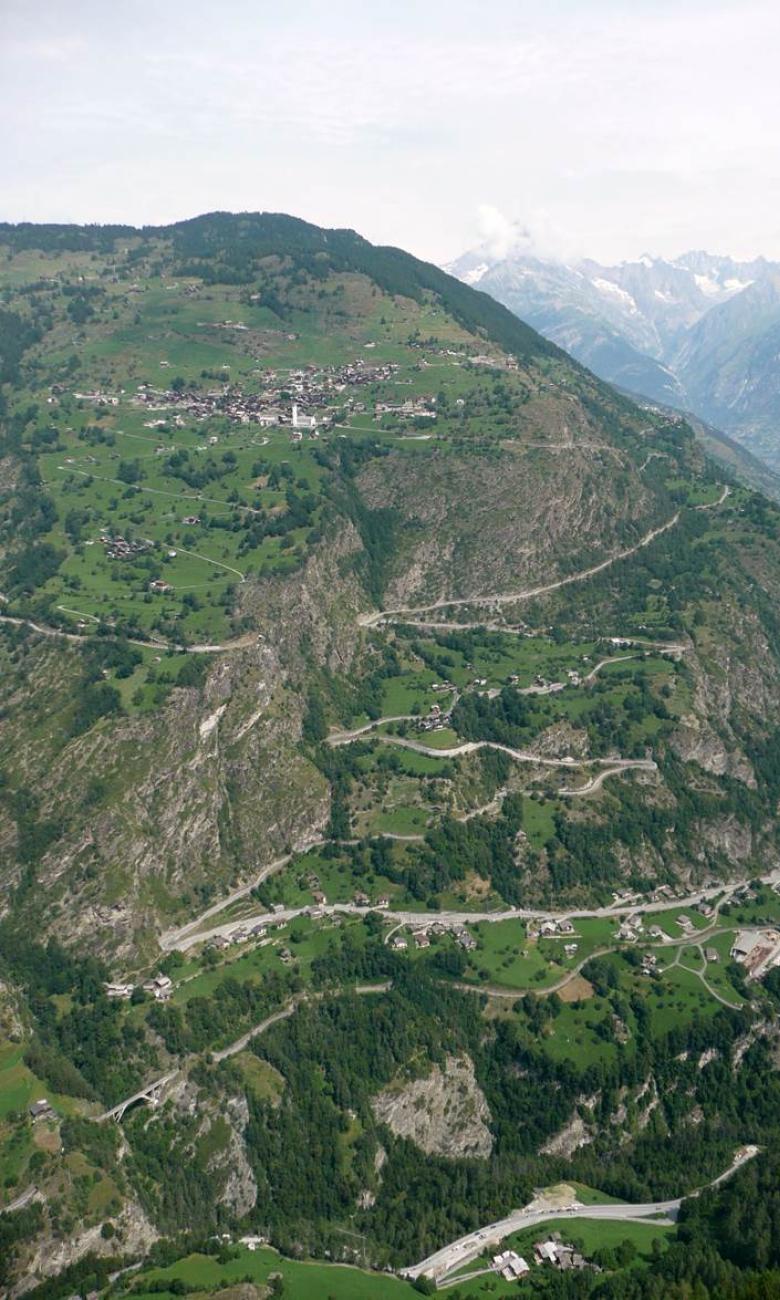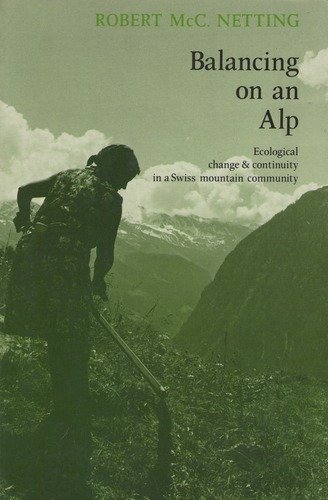The Swiss village that changed ecology – twice
A small Swiss mountain village in the beautiful Upper-Valais region near the Matterhorn enjoys the unique distinction of having helped changed ecology - twice. It's all down to its good record-keeping and clever management of its scarce water resources.
Törbel, population 481, sits on a hillside at 1497m above the town of Visp. It is proud of its traditions. Over 80% of the population are Törbel-born, even today.
Peaceful high-altitude solutions
The locals are known to other Swiss as "Bulls". It's not known why. Perhaps for their pugnacity in earlier times, suggests the mayor Urs Juon, with a wink. But their skill at solving problems peacefully is what catapulted them into science history.
The village's meticulous bookkeeping, going back 350 years, inspired the U.S. anthropologist Robert McCorkle Netting to visit Törbel in 1970 and 1971.
He was drawn to Törbel by the Swiss agriculturalist and ethnographer Friedrich Gottlieb Stebler, who wrote about the Vispertal, which includes the village.

In 1981 Netting published an ethnology of Upper Valais life entitled Balancing on an Alp, a study of the ecological balance between the local people and their environment, drawing on the community's historical records.

Netting championed peasant farmers for their energy-efficient, low-input, successful adaptation to the environment. His work helped establish cultural ecology as a scientific discipline. Until then, U.S. environmental management was mainly about preserving wilderness.
Netting, focusing on human-inhabited environments, showed that the household is the most effective management unit for farming. Governments, he said, should not interfere in deciding what farmers produce. His findings have changed environmental government practices around the globe.
First Nobel Economics prizewinning woman studied Valaisan bisses
Then in the 1980s, Elinor (Lin) Ostrom, a "poor kid" from California, came to Törbel in the 1980s as a researcher. In the village she learned how the local community had successfully managed the region's bisses (Suonen in Upper Valais dialect) -- the historic Valaisan systems of irrigation channels -- since at least 1483.

© Indiana University
Combined with her research around the world, her Törbel studies became the core of her major theoretical work, on what she termed common pool resources (CPR). It won her a share of the 2009 Nobel Economics Prize, though she wasn't a professor of economics but of political science. She remains the only woman to have won the award.
Ostrom found eight "design principles" for stable allocation of resources shared by a common pool. Basically they require you to ensure that local communities get equal rights and responsibilities for managing resources.
A system with no government
The system doesn't require a government to oversee it or individual ownership. Her principles challenged the prevailing orthodoxy, known as the tragedy of the commons. This declared that when no-one owns a common resource, everyone has an interest in exploiting it to extinction rather than preserving it. Fish stocks get depleted, grazing lands become bare, forests are denuded, and land worked till it is no longer fertile.
The conventional answer is governmental protection or property rights, and this was the practice in many countries after the tragedy article appeared in 1968.
Bisses management in the Valais showed these aren't the only solution. No-one owns the water courses and each individual along the route had and still has a right to take from the stream in return for putting in a few days maintenance work each year. There were substantial penalties for infractions, but no-one had an incentive to take a lot more than their share.
Direct democracy at work
It was an amazing story of direct democracy at work. Elsewhere in the Valais there were vigorous disputes between neighbouring communities about this scarce resource, essential for the cattle growers, vineyards, orchards and vegetable farms in the River Rhone valley below.
But Törbel found the right formula that evened out the demands and supplies.
Calculation methods for assigning water rights in the Valais were often unusual in a time when few people could read or write. Törbel chose the time when the first rays of sunlight hit the Weisshorn to indicate when water use could begin. In other places similar methods were used until at least 1950.
Guy Bratt, a former British consult in Geneva who became an enthusiast of bisses, believes their sudden appearance in medieval records is due to the profitability of exporting cattle to Italy, which led to an increase in cows and decrease in the traditional Valais sheep and goats.
His short book, The Bisses of Valais, is still perhaps the most informative popular guide about this traditional system of water management.

© Musée des Bisses
A name lost in time
Where do the terms bisse and Suon come from? Bratt couldn't find satisfactory explanations in his dictionaries. An international colloquy on bisses held in Sion in 2010 suggested bisses may originate in the Celtic bedu (similar to bed). Suon, not found in documents earlier than 1500, might be related to the Sanskrit su, meaning water, from the ancient Indo-European.
A German survey named bisses today as "without doubt the most celebrated irrigation system in Europe". A 1994 estimate calculated 376 remained out of a total of 1748, but it depends on what you count. Johannes Gerber in Meiringen maintains an inventory of 600 bisses. In addition, he notes that the bisse workers have their own saint: Margaret.
Drying up
The watercourses are popular with tourists, both locals and foreigners, since many have easy pathways alongside them in beautiful landscapes. But the Rhone valley remains short of rainfall (less than 600 millimetres on average each year). University of Lausanne researchers estimate that this could decline by 10% by 2050 if the predicted 2 degrees warming takes place.
Törbel is now an official Swiss Heritage Site and for three decades has supported a preservation society. The society maintains a museum and eight houses to show visitors and its young people how villagers used to live (four children to one bed, for example).
The bisses have their own museum in a 17th-century painted house in Ayent above Sion.
You can read more about the history of the bisses here.




